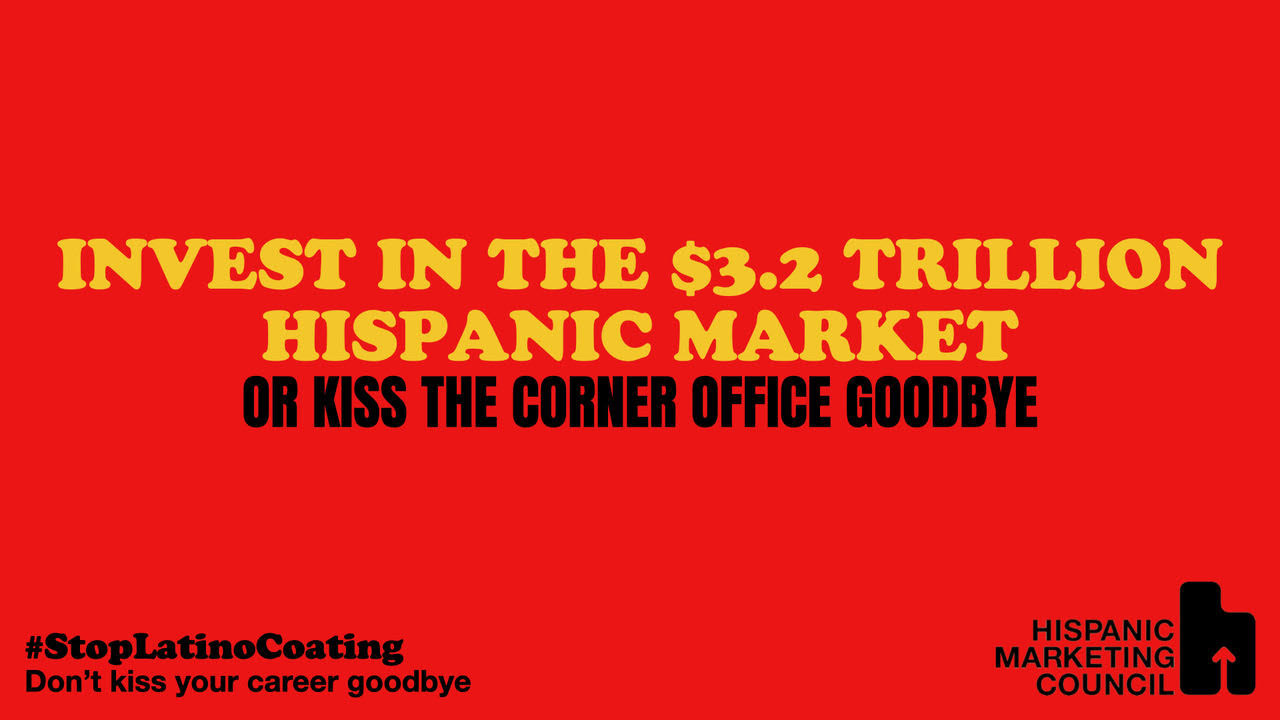Trends
Unveiling the Influence of Hispanic Women: Why They’re the Key to Advertising Success

Let’s talk about a powerhouse demographic that’s shaking up the advertising game: Hispanic women. They’re not just making waves; they’re practically running the show when it comes to consumer behavior and cultural trends. So, buckle up as we explore why targeting Hispanic women should be at the top of your advertising agenda.
Radio’s true impact for performance campaigns [REPORT]

Named ‘Radio: The Performance Multiplier’, the new study also reveals how on average, radio generates additional web sessions twice as cost-efficiently as other demand generation media combined.
Digital Out of Home advertising drives favorability and action among consumers

The Out of Home Advertising Association (OAAA) released compelling findings from a survey conducted by The Harris Poll on the efficacy of digital out of home (DOOH) advertising, showcasing its unparalleled ability to engage consumers. The study found a staggering 73% of consumers view DOOH ads favorably. Most notably, consumers ranked DOOH as the medium that would most drive them to take action, as 76% of recent DOOH ad viewers noted they had taken action because of a DOOH ad.
Americans’ Views of Technology Companies [REPORT]

Our survey asked Americans about three key areas: Social media’s impact on politics and the country | Political censorship and bias in Big Tech| Government regulation of technology companies
Trust Barometer Special Report: Trust and Health [REPORT]

In the Edelman Trust Barometer Special Report: Trust and Health, we explore the idea of health empowerment, and what it means for institutions responsible for the wellbeing of patients, employees, and consumers. As in the 2024 Edelman Trust Barometer, the public has strong views about innovations in health, and factors from politicization to misinformation are imperilling trust and impacting health outcomes.
Recommendations for U. S. Multicultural Marketing: A data-informed approach

As time progresses, we can see the impact that multicultural groups have on marketing and business operations. Specifically in the U.S., we can see the strides that marketers have made to ensure the U.S. maintains its status as a leader in multicultural marketing. Just as the U.S. has shifted its demographics away from being solely a nation of individuals with white skin and of European descent, this rise in multi-ethnic and multicultural communities has shaped the ways we operate and engage with people. By Derrick Raphael Pacheco - Department of Educational Leadership & Policy Studies, Florida State University
Asian American Audiences Spend Nearly Equal Time on TV and Smartphone [REPORT]

Nielsen released their latest Diverse Intelligence Series report to kick-off Asian Pacific American Heritage Month. The report titled, Reaching Asian American Audiences: Understanding Asian Influence and Media Consumption, highlights that Asian Americans are spending nearly equal time watching content on their TVs and smartphones.
8 in 10 Companies Plan to Layoff Recent College Graduates This Year Due To AI

Intelligent.com has published a recent survey report examining the impact of AI on young workers. The report also shares insight into the current availability of internship and entry-level job opportunities. In total, 804 hiring managers in the United States completed the survey.
Year-End 2023 U.S. Latin Music Revenue [REPORT]

Latin music in the U.S. has increased in popularity and value over the last eight years, outpacing overall recorded music each year across this period of strong growth. In 2023, the genre hit its highest mark yet at $1.4 billion, representing 16% growth over 2022. Adjusted for inflation, Latin music market revenues in 2023 are now 14% above the previous peak in 2005.
The Record: U.S. audio listening trends

Are you listening? As the audio horizon expands, the ways audiences are tuning in is shifting.
What is Multi-Culti+ ?

At DangerTV, Multi-Culti+ is both a vision and a mission to provide the very best in adventure and adrenaline content that both reflects and spurs the growing diversity of our country to explore (regardless of ethnicity)....everything!. At DangerTV, Multi-Culti + recognizes that adventure and adrenaline have invited you to get the best out of life, regardless of where you are from. Our content is your invitation. With shows from around the globe featuring diverse people rising to occasion after occasion, you start to realize that the brand is actually a metaphor for what sooner or later we all face: overcoming adversity. By Javier Saralegui, Founder and CEO, Danger TV, LLC
Profit Ability 2 – The new business case for advertising

A vast new study of advertising effectiveness has proven that advertising is a profitable driver of business growth and that all forms of advertising pay back, especially when their sustained effects are measured.
Navigating the Complexity of Marketing Capability Measurement

A marketer attends a training session, they learn new skills and apply them in their day-to-day role. As a result, their own and their teams’ behaviors change and the company sees improved effectiveness and ultimately achieves its financial aims and goals. Brilliant! Now the only job left to do is to prove the link between the learnings and business results… *Sigh*
Marketers Vastly Understate The Sales Effect Of Creative And Significantly Overestimate The Impact Of Targeting

How would you answer? What percent of sales are driven by each element? Answers should add up to 100%.
Hispanic Radio Directory Covers Nearly 2,000 U.S. AM & FM Stations [REPORT]

BIA Advisory Services has published the second edition of its Hispanic Radio Station Directory, a free comprehensive guide to the diverse cross-section of Spanish-language stations in the U.S. and Puerto Rico. Included are nearly 2,000 commercial and non-commercial AM and FM stations in over 100 different formats that appeal to various Hispanic target segments. A companion report accompanies the directory and features proprietary analysis into the Hispanic radio market.
CMO Tenure Study 2024: An Expanded View of CMO Tenure and Background

For 20 years, Spencer Stuart’s annual CMO Tenure Study has tracked the tenure and backgrounds of chief marketing officers from the top 100 advertisers in the U.S. This report highlights the challenges CMOs face and the opportunities for increasing their impact. We continue to enhance our tenure study, expanding our analysis to include new data points and, in 2022, we began incorporating data from the broader list of Fortune 500 CMOs into the analysis.
A Field Guide to Modern Marketing

Brand and marketing executives at consumer products companies have confronted big shifts in the playing field in recent years. More consumers expect more personalized content, convenience, and fair-trade sourcing. People shop, research, and check out content at any hour, through multiple channels. Determining which e-commerce platform merits the next advertising dollar has become more complicated. As a result, traditional marketing playbooks that depend on what has worked historically become less applicable to these emerging consumer trends.
HMC TO ADVERTISING & MARKETING EXECUTIVES: STOP LATINO COATING

In today’s competitive marketplace, CMOs face immense pressure to achieve growth. Proper investment and authentic engagement with U.S. Latinos, who are influencing mainstream culture and fueling demographic shifts is the clear answer. The Hispanic Marketing Council (HMC) unveiled a new campaign at its 2024 Annual Summit calling on the advertising and marketing industries to “Stop Latino Coating.” The resounding message? Give Hispanic marketing the weight it deserves, connect authentically or kiss your careers goodbye—#STOPLATINOCOATING.
THE HISPANIC MARKETING COUNCIL ANNOUNCED THE WINNERS OF THE 2024 HMC STRATEGIC EXCELLENCE AWARDS

The Hispanic Marketing Council (HMC) announced the winners of the 2024 HMC Strategic Excellence Awards Powered at its annual summit in New York City. After a record-breaking year—both in quality and quantity of entries—a total of nine Gold, five Silver and 13 Bronze awards were given to 16 US-based agencies representing 27 campaigns in nine categories.
The Power of Business en Español by Jose Cancela

Think about it: at no time in the history of America has an immigrant group had the media ecosystem keeping its native language alive the way the Hispanic community does today. Spanish-language media is ubiquitous. TV, radio, digital, outdoor, film, streaming, music, fashion, influencers – you name the medium, platform, genre or industry, and there is a powerful Spanish-language version. By Jose Cancela



























